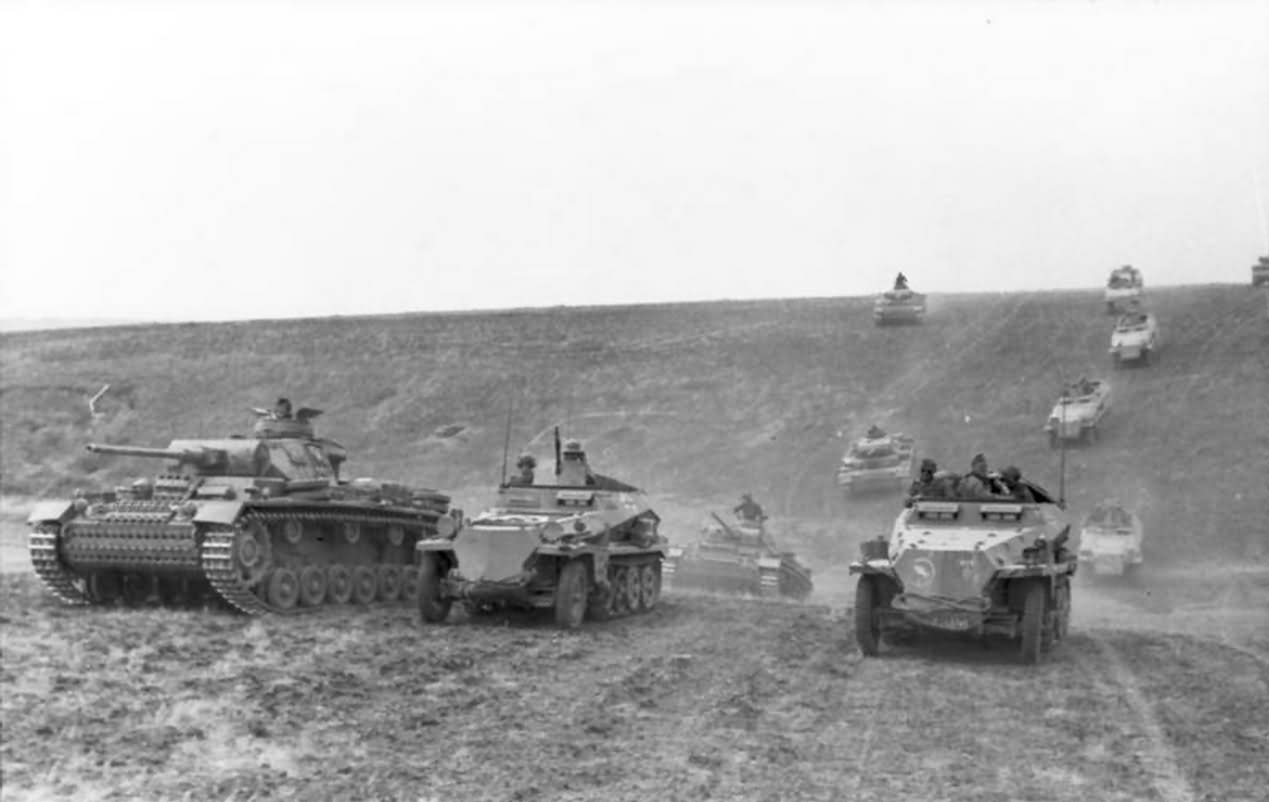The 24th Panzer Division was initially formed from the 1st Cavalry Division in February 1942, following its service in Russia as a cavalry unit. This transformation was part of the Wehrmacht’s broader trend of converting cavalry divisions into mechanized or armored formations during the war.
Formation and Structure
At the time of its creation, the division included:
- Panzer Regiment 24 (two battalions),
- Rifle Brigade 24 (later renamed Panzergrenadier Brigade 24), consisting of:
- Rifle Regiment 21 (two battalions),
- Rifle Regiment 26 (two battalions),
- Motorcycle Battalion 24 (later renamed Panzer Aufklärungs Abteilung 24 for reconnaissance),
- Aufklärungs Abteilung 86 (Reconnaissance),
- Artillerie Regiment 89 (three battalions),
- Other divisional units numbered 40, except for the Nachrichten Abteilung 86 (Signals Battalion).
Eastern Front Campaigns
The 24th Panzer Division fought in Russia, continuing from the operations it had conducted as the 1st Cavalry Division. The division was engaged in the brutal Eastern Front battles, and in particular:
- January 1943: The division was destroyed at Stalingrad alongside many other German formations during the encirclement and destruction of the 6th Army.
Reformation and Continued Battles
- March-April 1943: After being destroyed at Stalingrad, the 24th Panzer Division was re-formed in Normandy. Following its re-formation, it was briefly sent to Italy in August 1943, before being moved back to Russia.
- October 1943: It returned to the southern front in Russia, fighting near Kiev where it suffered heavy losses in November.
- March 1944: During the general withdrawal from the Dnepr Bend, the division again suffered significant casualties.
Final Campaigns and Surrender
- July 1944: The division was in southern Poland, participating in the defense against Soviet advances.
- October 1944: It fought in the Debrecen counterattack in Hungary, alongside other German and Hungarian units.
- December 1944-January 1945: The division was stationed in Slovakia before being transferred to West Prussia to counter the Soviet offensives in the region.
- May 1945: The division withdrew to Schleswig-Holstein, where it eventually surrendered to British forces as the war came to an end.
Final Full Establishment (1945)
By the war’s conclusion, the 24th Panzer Division was organized as follows:
- Panzer Aufklärungs Abteilung 24 (Reconnaissance),
- Panzer Regiment 24 (two battalions),
- Panzergrenadier Regiment 21 (two battalions),
- Panzergrenadier Regiment 26 (two battalions),
- Panzer Artillerie Regiment 89 (three battalions),
- Heeres Flak Abteilung 283 (Anti-Aircraft),
- Panzerjäger Abteilung 40 (Anti-Tank),
- Nachrichten Abteilung 86 (Signals),
- Panzer Pioniere Bataillon 40 (Engineers).
Key Changes Over Time:
- The division’s units underwent frequent reorganization due to heavy casualties and attrition, particularly after the Stalingrad disaster.
- In December 1943, the II Battalion of Panzer Regiment 24 was disbanded and later re-formed from Panzer Zerstörungs Battalion 471 in September 1944.
- By January 1945, the division had been reduced in strength to a Kampfgruppe (combat group) consisting only of Panzergrenadier Regiment 21, two Panzer companies, and the Panzerjäger Abteilung 40.
Throughout its history, the 24th Panzer Division faced some of the most grueling battles on the Eastern Front, contributing to its repeated destruction and reformation before it ultimately surrendered in May 1945.
